- Home
- Graham Hancock
Magicians of the Gods: The Forgotten Wisdom of Earth's Lost Civilization Page 5
Magicians of the Gods: The Forgotten Wisdom of Earth's Lost Civilization Read online
Page 5
Putting together the evidence of Gunung Padang with that derived from Göbekli Tepe, the Sphinx of Egypt, and other sites and lines of data from around the world, I believe we are coming closer to understanding the cataclysmic times and events at the end of the last Ice Age. Genuine civilizations of a sophisticated nature existed prior to circa 9700 BCE, which were devastated by the events that brought the last Ice Age to a close.7
Looking for the smoking gun …
At six thousand or more years older than the stone circles of Stonehenge, the megaliths of Göbekli Tepe, like the deeply buried megaliths of Gunung Padang, mean that the timeline of history taught in our schools and universities for the best part of the last hundred years can no longer stand. It is beginning to look as though civilization, as I argued in my controversial 1995 bestseller Fingerprints of the Gods, is indeed much older and much more mysterious than we thought.
In essence what I proposed in that book was that an advanced civilization had been wiped out and lost to history in a global cataclysm at the end of the last Ice Age. I suggested there were survivors who settled at various locations around the world and attempted to pass on their superior knowledge, including knowledge of agriculture and architecture, to hunter-gatherer peoples who had also survived the cataclysm. Indeed even today we have populations of hunter-gatherers, in the Kalahari Desert, for instance, and in the Amazon jungle, who co-exist with our advanced technological culture—so we should not be surprised that equally disparate levels of civilization might have co-existed in the past.
What I could not do when I wrote Fingerprints, because the data was not then available, was identify the exact nature of the cataclysm that had wiped out my hypothetical lost civilization. Instead I speculated on a number of possible causes, notably the radical “earth crust displacement” theory of Professor Charles Hapgood which, though endorsed by Albert Einstein,8 has since found little favor among geologists. This absence of a credible “smoking gun” was one of the many aspects of my argument that was heavily criticized by archaeologists. Since 2007, however, a cascade of scientific evidence has come to light that has identified the smoking gun for me. It’s all the more intriguing because it’s the work of a large group of impressively credentialed mainstream scientists, and because it does not rule out, indeed it in some ways reinforces, the case for massive crustal instability that I made in Fingerprints of the Gods.
We’ll explore this new evidence, and its stunning implications, in the following chapters.
Part II
Comet
Chapter 3
A Wall of Green Water Destroying Everything in Its Path …
Could certain ancient myths and traditions, judged to be of no historic value by scholars, in fact encode accurate recollections of an epoch when humanity experienced a crisis so devastating, so cataclysmic and so dislocating that we lost our memory of our true past? Consider this account from the Ojibwa, a Native American people:
The star with the long, wide tail is going to destroy the world some day when it comes low again. That’s the comet called Long-Tailed Heavenly Climbing Star. It came down here once, thousands of years ago. Just like the sun. It had radiation and burning heat in its tail.
The comet burned everything to the ground. There wasn’t a thing left. Indian people were here before that happened, living on the earth. But things were wrong; a lot of people had abandoned the spiritual path. The holy spirit warned them a long time before the comet came. Medicine men told everyone to prepare. Things were wrong with nature on the earth … Then that comet went through here. It had a long, wide tail and it burned up everything. It flew so low the tail scorched the earth … The comet made a different world. After that survival was hard work. The weather was colder than before …1
There are other interesting details in the various versions of this myth told among the Ojibwa and recorded by anthropologist Thor Conway. For example there is a reference to the comet killing off “giant animals … You can find their bones today in the earth. It is said that the comet came down and spread his tail for miles and miles.”2 At the time of this event, usually referred to as “the first burning of the earth,” we’re told that the Ojibwa “lived near the edge of the Frozen Lands.”3 It is also recorded that soon after the comet disaster “the first flooding of the earth” occurred.4
Just as the Ojibwa tradition laments that “things were wrong … people had abandoned the spiritual path,” thus implicating human behavior in the disaster that followed so, too, the Brule, one of the tribes of the Lakota Nation, tell of a time “in the world before this one,” when “the People and animals turned to evil and forgot their connection to the Creator.” In response, the Creator resolved “to destroy the world and start over.” He first warned a few good people to flee to the highest mountaintops, then sent down “fierce Thunderbirds to wage a great battle against the other humans and the giant animals” (again, as in the Ojibwa myth, the Brule account speaks of animals of extraordinary size).5
Finally, at the height of the battle, the Thunderbirds suddenly threw down their most powerful thunderbolts all at once. The fiery blast shook the entire world. Toppling mountain ranges and setting forests and prairies ablaze. The flames leaped up to the sky in all directions, sparing only the few People on the highest peaks … Even the rocks glowed red hot, and the giant animals and evil people burned up where they stood.
Now the Creator began to make the world anew:
As the Creator chanted the song of creation it began to rain. The Creator sang louder and it rained harder until the rivers overflowed their banks and surged across the landscape. Finally the Creator stamped the Earth, and with a great quake the Earth split open, sending great torrents across the entire world until only a few mountain peaks stood above the flood, sheltering the few People who had survived … [After the flood subsided], as the People went out over the land they found the bleached bones of the giant animals buried in rock and mud … People still find them today in the Dakota Badlands.6
Of particular note, when we remember that a species of giant beaver became extinct in North America at the end of the Ice Age,7 is a myth of the Passamaquoddy, Micmac and Malisee that speaks of a being called Glooscap, described as “a spirit, a medicine man and a sorcerer,” who created the first animals, among them the first beaver—a creature so large that when it built a dam it “flooded the country from horizon to horizon.” Glooscap tapped the beaver on its back and it shrank to its present size.8
The reference to a flood in this story is one among hundreds in the myths of the Native Americans. Many of them contain intriguing details of great relevance to new scientific information about events in North America at the end of the Ice Age that we will explore in the following pages. For example, the Cowichan of British Columbia recall a time in the remote past when their seers became greatly troubled on account of strange dreams which foretold destruction. One man said: “I have dreamed a strange thing. I dreamed that such rain fell that we were all drowned.” Another said, “I dreamed that the river rose and flooded the place, and we were all destroyed.” “So did I,” chimed another. “And I too.”9
The seers were disbelieved by their people but nonetheless resolved to build a huge raft of many canoes joined together. Not long after they were done the rain commenced. The drops were as large as hailstones and so heavy that they killed the little babies. The river rose and all the valleys were covered. The seers, and those few of their friends who had believed them:
took their families and placed them on the raft and took food and waited. By and by the raft rose with the water … At length the rain stopped, and they felt the waters going down, and their raft rested on the top of Cowichan Mountain … Then they saw the land, but what desolation met their eyes! How their hearts were wrung with anguish. It was indescribable.10
Unusually large hailstones feature in a Quillayute cataclysm myth:
For days and days great storms blew. Rain and hail and then sleet and snow came down
upon the land. The hailstones were so large that many of the people were killed … [The survivors] grew thin and weak from hunger. The hailstones had beaten down the ferns and the camas and the berries. Ice locked the rivers so that the men could not fish.11
The Pima, or “River People,” presently live in Arizona whence they migrated in remote antiquity from much farther north. As is the case with the Cowichan, a seer features in their cataclysm traditions—in this case a seer who was warned by a great eagle that a flood was coming. The eagle visited the seer four times and each time he ignored its warnings. “You’d better believe what I’m telling you,” said the eagle. “The whole valley will be flooded. Everything will be destroyed.” “You’re a liar,” said the seer. “And you’re a seer who sees nothing,” said the eagle:
The bird flew away, and hardly had he gone when a tremendous thunderclap was heard, the loudest there has ever been … The sun remained hidden behind dark clouds, and there was only twilight, gray and misty. Then the earth trembled, and there came a great roar of something immense moving. The people saw a sheer green wall advancing toward them, filling the valley from one side to the other. At first they did not know what it was, and then they realized that it was a wall of green water. Destroying everything in its path, it came like a huge beast, a green monster, rushing upon them, foaming, hissing, in a cloud of spray. It engulfed the seer’s house and carried it away with the seer, who was never seen again. Then the water fell upon the villages, sweeping away homes, people, fields and trees. The flood swept the valley clean as with a broom. Then it rushed on beyond the valley to wreak havoc elsewhere.12
The Inuit of Alaska preserve a tradition of an earthquake, accompanied by a terrible flood that swept so rapidly over the earth that only a few people managed to escape in their canoes, or take refuge on the tops of the highest mountains.13 The Luiseno of California also remember a flood that covered the mountains and destroyed most of mankind. Only those few who fled to the highest peaks were spared when all the rest of the world was inundated.14 Similar flood myths were recorded among the Hurons.15 And the Montagnais, who belong to the Algonquin family, relate how the god Michabo reconstructed the world after a great flood:
Michabo was hunting with his pack of trained wolves one day when he saw the strangest sight: the wolves entered a lake and disappeared. He followed them into the water to fetch them, and as he did so the entire world flooded. Michabo then sent forth a raven to find some soil with which to make a new earth, but the bird returned unsuccessful in its quest. Then Michabo sent an otter to do the same thing, but again to no avail. Finally he sent the muskrat and she brought him back enough earth to begin the reconstruction of the world.16
Lynd’s History of the Dakotas, written in the nineteenth century, preserves many indigenous traditions that would otherwise have been lost. These include an Iroquois myth that “the sea and the waters had at one time infringed upon the land so that all human life was destroyed.” The Chickasaws asserted that the world had been destroyed by water, “but that one family was saved and two animals of every kind.” The Lakota (Dakotas) also spoke of a time when there was no dry land and when all men disappeared from existence.17
Myths speaking to science
For years an often acrimonious debate has been underway among scholars regarding the peopling of the Americas. Who are the Native Americans, exactly? When did they first arrive in the New World? And by what route?
Whenever a resolution has begun to look possible, whenever some kind of consensus has been about to emerge, new information has been presented, by one side or the other, that calls for a rethink. What has never been in dispute, however, is that the ancestors of today’s Native Americans were already in North America 12,800 years ago, when the mysterious cold event that geologists call the Younger Dryas began, and that they witnessed and hunted the megafauna that flourished during the Ice Age including the gigantic Columbia Mammoth, the somewhat smaller Wooly Mammoth, the giant beaver, short-faced bears, giant sloths, two species of tapirs, several species of peccaries and the fearsome American lion.
It’s thought likely, therefore, that the references to very large animals in the myths cited above are not mere fantasies but preserve eye-witness accounts of some of the many genera of mega-mammals that were present in North America before the Younger Dryas began, but had passed into extinction by the time it ended 1,200 years later. The same goes for the floods that the myths describe,18 for geologists agree that North America was indeed subjected to episodes of cataclysmic flooding in the final millennia of the last Ice Age. What new research has called into question in the past decade, however, is whether the scale, extent and, most importantly, the causes of those floods have been properly understood. The mainstream view is copiously represented, and endlessly repeated in books and journals published since the 1960s, but in order to get to grips with a powerful alternative view that now poses a serious challenge to established theories, I made an extensive field trip across North America in September and October 2014 with catastrophist researcher Randall Carlson.19
Randall cannot be a reincarnation of J Harlen Bretz, because J Harlen Bretz (whose first name was J and who hated it when proofreaders tried to treat it like an initial) passed away on February 3, 1981, by which time Randall was already thirty years old. However in his passion for real fieldwork, for walking the walk rather than just reading the literature, and in his dogged advocacy of a radical geological hypothesis concerning the cataclysmic floods that tore North America apart at the end of the Ice Age, Randall is in every meaningful sense the new J Harlen Bretz.
I will describe my travels with Randall, and the compelling evidence he presented me with, in the chapters that follow, but first, you may well be wondering, who was J Harlen Bretz?
Meet J Harlen Bretz
Here is Bretz, writing in 1928 after one of his field trips across Washington State in the Pacific Northwest of the US:
No one with an eye for landforms can cross eastern Washington in daylight without encountering and being impressed by the “scabland.” Like great scars marring the otherwise fair face of the plateau are these elongated tracts of bare, or nearly bare, black rock carved into mazes of buttes and canyons. Everybody on the plateau knows scabland. It interrupts the wheat lands, parceling them out into hill tracts less than 40 acres to more than 40 square miles in extent. One can neither reach them nor depart from them without crossing some part of the ramifying scabland. Aside from affording a scanty pasturage, scabland is almost without value. The popular name is an expressive metaphor. The Scablands are wounds only partially healed—great wounds in the epidermis of soil with which Nature protects the underlying rock.
With eyes only a few feet above the ground the observer today must travel back and forth repeatedly and must record his observations mentally, photographically, by sketch and by map before he can form anything approaching a complete picture. Yet long before the paper bearing these words has yellowed, the average observer, looking down from the air as he crosses the region, will see almost at a glance the picture here drawn by piecing together the ground-level observations of months of work. The region is unique: let the observer take the wings of the morning to the uttermost parts of the earth: he will nowhere find its likeness.20
By 1928 Bretz was an experienced and highly credentialed field geologist. Born in 1882, he’d started his career as a high school biology teacher in Seattle but spent most of his spare time exploring the geology of Puget Sound. Although he didn’t have a geology degree at the time, he succeeded in getting several articles on his findings published in scientific journals.21 In 1911 he enrolled at the University of Chicago to pursue a doctorate in geology. He graduated summa cum laude in 1913 and immediately thereafter returned to Seattle where he accepted a position as assistant professor of geology at the University of Washington.22 He had difficulties with the attitudes of other teaching staff there (he later described them as “stick-in-the-muds”23) and by 1914 he was back at the Unive
rsity of Chicago, initially as an instructor but soon afterward as an assistant professor.24
The first field trip Bretz made to the Scablands of eastern Washington was in 1922. By this point, as a result of his earlier work, he was fully informed about the Ice Age in all its dimensions and more aware than most other geologists that immense ice sheets up to two miles deep had covered North America for the best part of 100,000 years until the ice melted dramatically somewhere between 15,000 and 11,000 years ago. Thus when he saw huge numbers of erratics—giant boulders that didn’t belong naturally in the area but had clearly been brought in from elsewhere—he was inclined to assume that they might have traveled here in icebergs carried on some great glacial flood. This impression was strengthened when he explored Grand Coulee and Moses Coulee—gigantic channels gouged deeply in the earth—and visited the Quincy Basin at the southern end of Grand Coulee where he found the whole 600-square-mile depression filled up to a depth of 400 feet with small particles of basalt debris. He couldn’t help but wonder, “where had all the debris come from, and when?”25 Again the answer that presented itself to him was a flood.
Figure 13
Bretz was back in the Scablands in 1923 for three months of exploration and it seems to have been during this field trip that his later views—namely that “some spectacular hydrological event … had begun in this region, then abruptly stopped,” really began to take shape.26
In the November–December 1923 issue of the Journal of Geology Bretz published a paper summarizing his findings. To understand the somewhat defensive tone of the paper it is important to keep in mind the prevailing geological doctrine of the time, the principle known as “uniformitarianism.” This is the assumption that existing processes, acting as at present, are sufficient to account for all geological changes. Integral to it is the parallel assumption of gradualism, namely that “the present is the key to the past” and that the rate of change observable today is an accurate guide to rates of change that prevailed in the past.

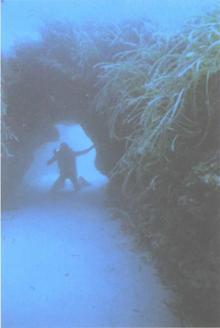 Underworld: The Mysterious Origins of Civilization
Underworld: The Mysterious Origins of Civilization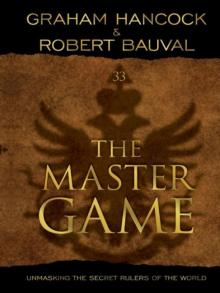 The Master Game: Unmasking the Secret Rulers of the World
The Master Game: Unmasking the Secret Rulers of the World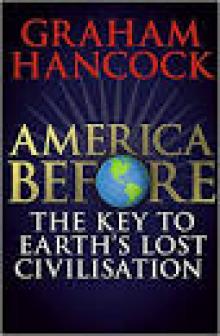 America Before
America Before Entangled
Entangled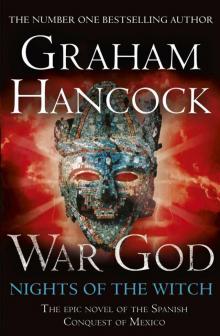 War God: Nights of the Witch
War God: Nights of the Witch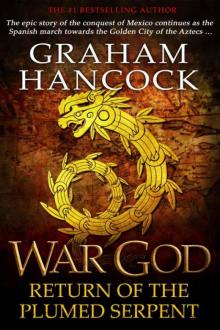 War God: Return of the Plumed Serpent
War God: Return of the Plumed Serpent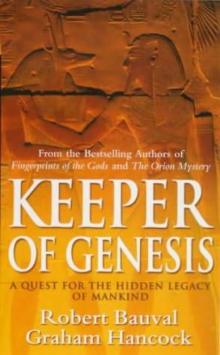 The Message of the Sphinx AKA Keeper of Genesis
The Message of the Sphinx AKA Keeper of Genesis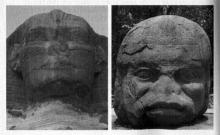 Fingerprints of the Gods
Fingerprints of the Gods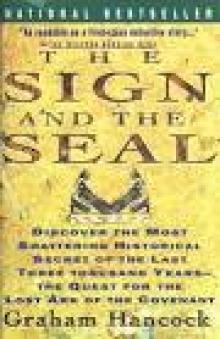 The Sign and the Seal
The Sign and the Seal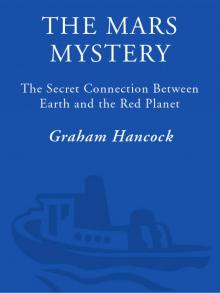 The Mars Mystery: The Secret Connection Between Earth and the Red Planet
The Mars Mystery: The Secret Connection Between Earth and the Red Planet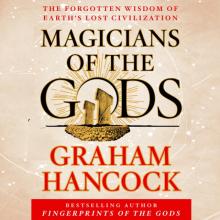 Magicians of the Gods: The Forgotten Wisdom of Earth's Lost Civilization
Magicians of the Gods: The Forgotten Wisdom of Earth's Lost Civilization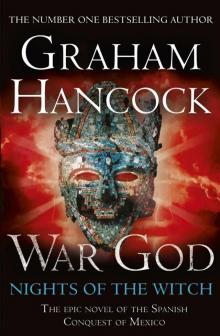 War God
War God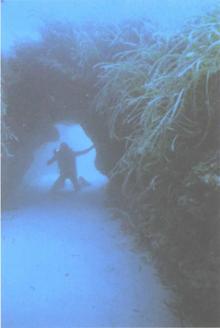 Underworld
Underworld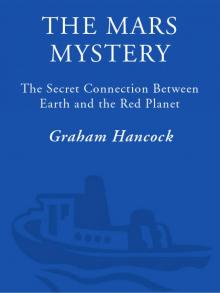 The Mars Mystery
The Mars Mystery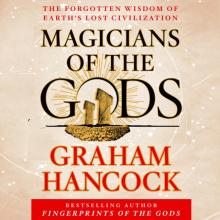 Magicians of the Gods
Magicians of the Gods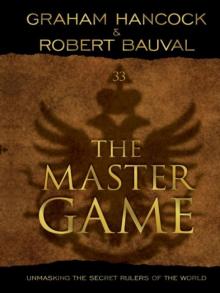 The Master Game
The Master Game